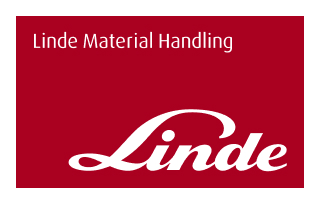- Blog
- News


Warehouse safety is a top priority in intralogistics. With increasing demands on material handling, having reliable measures in place to protect drivers, employees, goods being transported, racking and other equipment is essential.
At Linde Material Handling, we have one clear goal: to avoid 100% of accidents in intralogistics. To achieve this goal, we came up with “Vision Zero” — a philosophy aimed at increasing safety in internal transportation and preventing forklift accidents and other incidents when handling goods.
Linde recently had the opportunity to collaborate with SafeWork NSW on their upcoming campaign, “It’s the safe way or ‘no way’”, highlighting our shared commitment to safety.
Representatives from SafeWork NSW, and Belinda de Ruiter, National HSEQ Manager at Linde Material Handling, offer insights into the recent collaboration.
Linde’s assistance with a previous SafeWork NSW forklift safety photoshoot demonstrated how our company implemented numerous safety controls to protect people working around forklift operations. Safety controls, such as walkways and barriers, were crucial for the campaign photoshoot that focused on safety around forklift operations.
Belinda comments, “Our forklifts are renowned for their robust safety features, incorporating advanced technical innovations and intelligent systems. These include warning systems, lighting enhancements, assistance systems, and rigorous structural safety standards. Linde has also implemented designated pedestrian-only zones fortified with physical barriers, planned in consultation with workers and stakeholders. This collaborative approach ensures efficient implementation and adherence to safety protocols in workplaces.”
Business and worker challenges include underestimating safety risks, potential harm or consequences from unsafe behaviours or process, complacency regarding the risk of injury, illness or disease, and external pressure such as time constraints, fatigue, and client demands. Other challenges include overestimating abilities, taking chances, and a workplace culture that prioritises productivity over safety.
Another challenge is the lack of accountability and collaboration regarding WHS, resulting in blame-shifting. For example, employers may not prioritise employee WHS, or employees may not follow processes or speak up.
SafeWork NSW continues to report incidents involving forklift operations with severe consequences. It is important for businesses to understand their regulatory requirements to control risks and ensure that forklifts do not collide with pedestrians. Businesses can implement controls such as traffic management plans, clearly marked walkways, barriers, and good lighting to manage the separation of people and forklifts.
Belinda comments, “From Linde’s side – engaging relevant stakeholders, particularly forklift operators and workplace personnel, is integral to the success of safety initiatives. We advocate for businesses seeking to elevate their safety standards to prioritise consultation with affected workers. Their insights into challenges, proposed improvements, and operational realities are invaluable in fostering a safety culture that is embraced and sustained.”
During their visit, the SafeWork NSW team captured a series of visuals demonstrating workplace safety. It was an honour to collaborate with SafeWork NSW, supporting their commitment to safety and being featured in this important campaign, which aligns perfectly with our safety goals at Linde Material Handling.
For more SafeWork NSW’s safety initiatives and resources, visit their website - It’s the safe way or 'no way' | SafeWork NSW